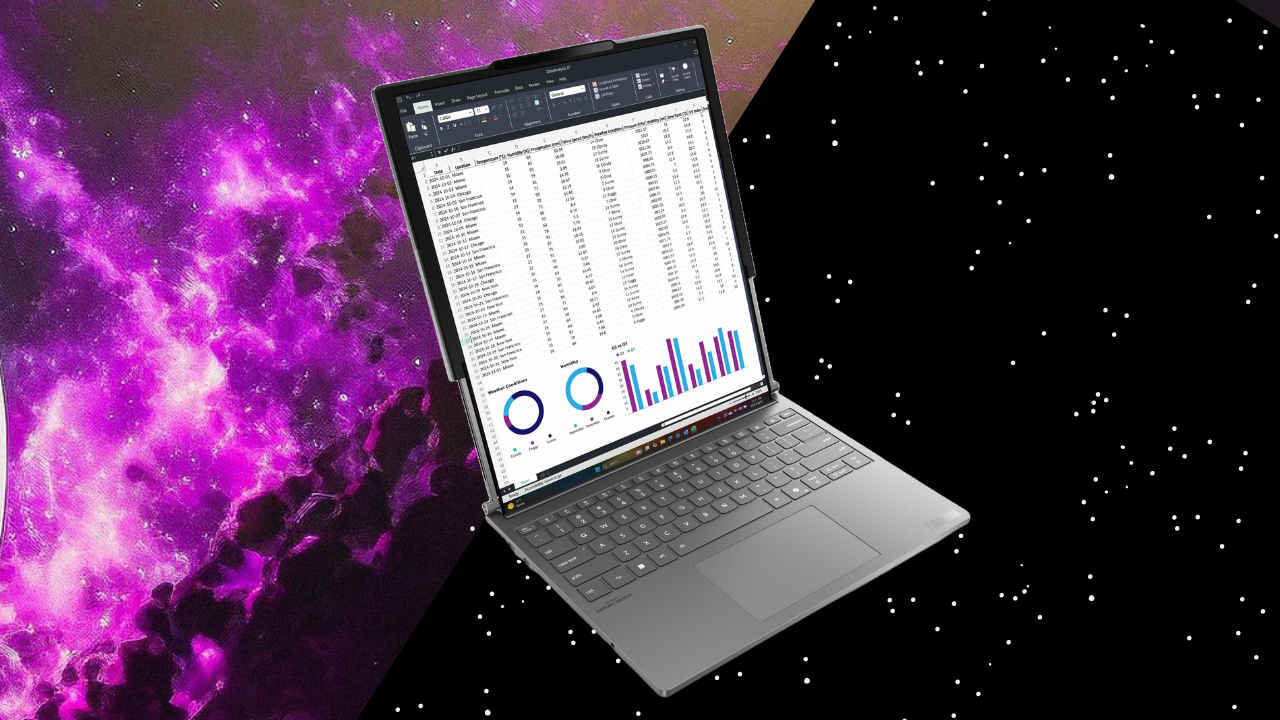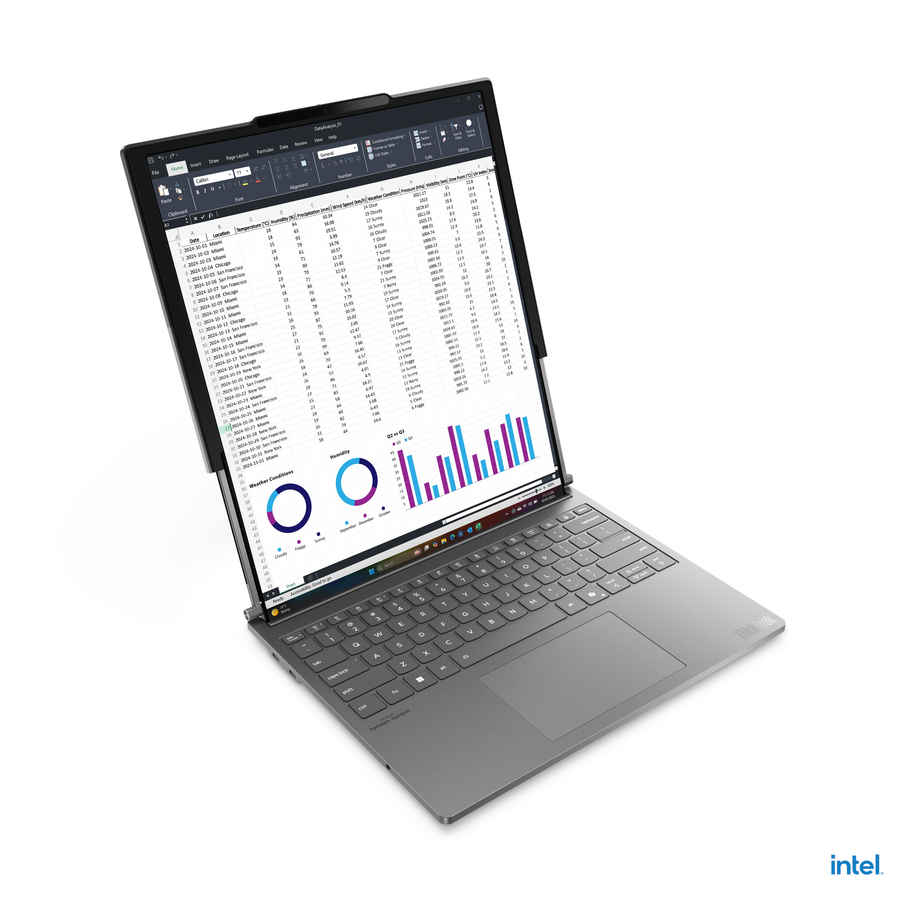This laptop scrolls up like a web page: Lenovo’s rollable ThinkBook Plus Gen 6 launched
The ThinkBook Plus Gen 6 uses a motorized rollable OLED that expands from a 14-inch canvas to a 16.7-inch portrait display.
A simple palm gesture or keyboard shortcut smoothly extends and retracts the screen in under a second.
Inside the 19.9 mm chassis sits Intel’s Core Ultra 7 CPU, Arc Xe² graphics and a 48 TOPS NPU for Windows Copilot+ features.

If you have ever tried editing a long spreadsheet on a cramped 16:10 panel or stacked browser tabs in a coffee shop, you will recognise the itch that drove Intel’s Shanghai-based customer-engineering team and Lenovo’s R&D lab to rethink the conventional clamshell. Their answer is a laptop that literally grows on demand, turning web pages, code editors, and portrait-video feeds into full-height experiences while still closing into an ordinary-sized notebook for the commute. That blend of ambition and practicality is the hook: the ThinkBook Plus Gen 6 is not simply showing off, its rollable screen exists to solve everyday frustrations.
 Survey
SurveyFrom CES concept to retail reality

First teased as a proof-of-concept in early 2023, the rollable ThinkBook returned to CES 2025 as a finished product and promptly walked away with more than 70 “best in show” awards, including The Verge’s outright winner for the event. Reviewers who handled pre-production units described the unfolding motion as “magical” and “nuts”, noting that a palm gesture or keyboard shortcut triggers a smooth, motor-driven rise that plays a short animation and chime.
Also read: After Apple: Alumni who rewired tech
With the press of a button or a wave of the hand, the display stretches from a 2000×1600-pixel 14-inch canvas (5:4) to a 2000×2350-pixel 16.7-inch portrait surface (roughly 40:47). Lenovo claims the mechanism is rated for 20,000 rolls and 30,000 lid cycles, numbers typical of premium-grade hinges, and demonstrations at CES showed it surviving continuous abuse on the stand.
Engineering the roll
Achieving that party trick meant shrinking the motherboard, reshaping the battery, and squeezing two miniature motors into a 19.9 mm chassis. Intel’s contribution centred on Dynamic Tuning Technology (DTT): firmware that cuts power to the scrolled-away pixels, retunes the thermal envelope when the display retracts (it traps heat inside the lid) and coordinates the graphics driver so Windows sees the extension as a single seamless desktop rather than an external monitor popping in and out. That driver hack is, according to Intel, an industry first, and it prevents the stutter you might expect as the resolution switches mid-animation.
The flexible OLED itself is similar to the plastic-substrate panels found in foldable phones, but Lenovo adds a reinforcing multi-layer structure to resist creasing. Weight sits at 1.69 kg, lighter than a 16-inch MacBook Pro but still hefty for an ultraportable.
Everyday Benefits and Software Caveats
Switching to portrait mode increases visible Excel rows from 39 to 66, an immediate boon for accountants and data analysts; programmers can view dozens more lines of code; and social-media managers get a full-height TikTok or Instagram feed without black bars. Early hands-on reviewers highlight the novelty of stacking two 16:9 windows, video call above, notes below, on a single screen instead of juggling a second monitor.
Also read: What is DLSS? What is the Difference between DLSS 3 and DLSS 4?
Yet software remains the weak spot. Windows 11 still assumes screens are rigid rectangles, so snapping sometimes confuses the change in aspect ratio, and Lenovo’s overlay utility is required to shepherd windows during the transition. Microsoft’s forthcoming Copilot+ update treats the ThinkBook as a qualifying device thanks to its onboard Neural Processing Unit, but many AI-centric features depend on developers embracing tall-portrait layouts.
Hardware platform and performance
At the heart of the laptop sits an Intel Core Ultra 7 Series 2 (“Lunar Lake”) processor, pairing a 12-core CPU with new Arc Xe² graphics and an NPU rated up to 48 TOPS, well above Microsoft’s 40 TOPS Copilot+ threshold. Lenovo offers configurations with up to 32 GB LPDDR5X-8533 memory and a 1 TB PCIe 4.0 SSD. Connectivity covers Wi-Fi 7, Bluetooth 5.4, two Thunderbolt 4 ports, and a 3.5 mm audio jack; there is no HDMI or SD slot, a compromise that reviewers lamented given the price. Power comes from a 66 Wh battery and a 65 W GaN USB-C charger, and Intel’s Power Share algorithm dynamically shifts wattage between CPU, NPU, and display motors to maximise runtime.
Pricing, availability, and market context
Lenovo opens sales on 19 June, starting at US $3,499 before taxes, a figure that places the ThinkBook Plus Gen 6 alongside premium 16-inch workstations and well above most convertibles. While sticker shock is real, Lenovo is betting that early adopters in finance, design, and social media appreciate the travel-friendly footprint and extra vertical canvas more than they fear the novelty risk.
The launch also signals a wider trend: Intel’s client-computing group has worked on six generations of ThinkBook Plus designs, each pushing a different idea, including E-Ink lids, dual screens, twist hinges, detachable tablets, and the rollable model is the first to go from lab to shelves in under two years.
Sagar Sharma
A software engineer who happens to love testing computers and sometimes they crash. While reviving his crashed system, you can find him reading literature, manga, or watering plants. View Full Profile